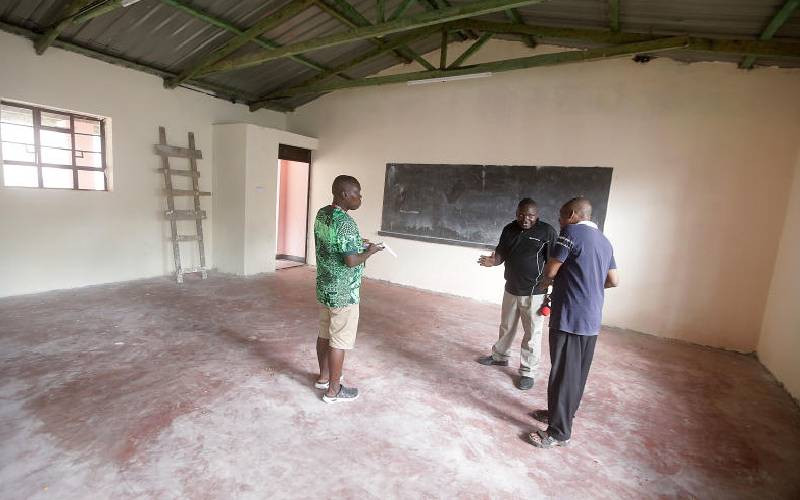Famous for its broad, leafy avenues, the Mozambican capital lingers in the mind as one of the most beautiful cities in Africa. The many beachside hotels offer a perfect place to watch the world go by, writes Charles Bigirimana
Formerly known as Lourenco Marques, the Mozambican capital Maputo was believed to be one of the most beautiful cities in the world before the liberation and civil wars.
The ten-year liberation struggle against Portuguese colonialists, which ended in 1975 and the 16-year civil war that started immediately after independence, left its marks on the people and infrastructure, especially houses.
However, the country looks set to reclaim its past glory. This can be seen as soon as one lands at Maputo International Airport, where new buildings are in their last phase of construction. New high-rise buildings can be seen everywhere a sure sign of a vibrant economy.
However, not everything is rosy. Local inhabitants say life is tough in Maputo. Recent riots over increased prices of basic commodities are a testimony.
The city is divided into districts. The safest areas are located in the central parts, which is itself divided into A, B and C. Like in most other cities of the world insecurity grows as one moves to the periphery of a city. Central Maputo is generally safe except for a few pickpockets. One can walk at night and withdraw money from ATM machines without any worries.
Although Mozambicans are generally known to be welcoming people, one should not throw caution to the wind.
"Never discuss specific future plans for a day in public… never display jewellery, money or any valuable in your room… never invite strangers to your room," warns a hotel notice to customers.
"There is no problem here (central Maputo), but in some areas, they can carry you, let alone steal from you and do whatever they want with you," says Paulo, a technician from the North-Western Tete Province living in the city.
Transportation
Though they have matatus for their transport system, visitors are more inclined to use taxis. One pays more for transport from airport to town than vice-versa. Although it costs between US $10-15 from the airport to central Maputo, the price drops to about nine dollars between central town and the airport. The logic behind the discrepancy is that a visitor to Maputo has no choice at the airport as taxi drivers gang up and set prices.
In the town itself the most common mode of transport is a mini-bus commonly called chapas and medium-sized buses, the size of a Japanese Coaster. They are what we would call matatus back home though they have less noise and are not as flashy. There are also inexpensive taxis like in Nairobi and Tuk Tuks, which are cheaper alternatives to taxis.
The city has several high-class hotels, with many of them located near the beach. For 200 dollars you are certain to get a good hotel offering bed and breakfast. If this is too much for you, there are middle-level hotels such as Cardoso and Tivoli not far from the beach, which costs US $100-200 a snight.
There are also clean, relatively cheap and safe hotels in central Maputo, which cost between US $40 to 60.
Most of these hotels here serve seafood that would averagely cost about five dollars, but the same food can cost up to US $12 in restaurants and high-class hotels. Some of the best restaurants and hotels are situated along the cities coastline. For example, Costa do Sol Restaurant and Waterfront Restaurant both located on the beach offer a good view of Catembe ferry, across the Maputo bay. From the verandahs of some of the restaurants one can see passing ships and small ferries as they transport people from Maputo to Catembe.
Stay informed. Subscribe to our newsletter
While water touches Waterfront Restaurant walls, there is a road separating Costa do Sol Restaurant from the beach. The Costa do Sol beach is one of the most favourite for local residents.
CafÈ Acacia located at Jardim Dos Professores in the Museu area also provides a panoramic view of the Maputo Bay. The cafeteria belongs to Hotel Cardoso and is situated on a higher ground, which allows one to have a panoramic view of the Maputo Bay and Catembe beyond.
Seafood
A Nossa Cassa (Our House), a beach bar/restaurant that also serves roast seafood, is recommended for those who love evening ocean waves.
A first-time visitor does not fail to notice that there is the well-to-do central Maputo and a dilapidated one on the fringes. On one side there is the rich Maputo with smooth roads, tall and newly painted buildings and few people in the streets. On the other side, there is the Maputo with rough avenues, run-down highrise buildings with clothes hanging on apartment balconies above shops.
The buildings were nationalised after the departure of the Portuguese colonialists in the 1970s. The Mozambicans who occupied them were unable to maintain them. Most of the buildings are ten to 20-storey high. Local inhabitants say most are infested with rats and cockroaches and have no operating lifts.
"Some are being rehabilitated, you should have seen them in early 1990s," a local resident said.
A first time visitor to Maputo should not be surprised if some Mozambicans address them in Swahili or English. In Mozambique, inhabitants of the northern provinces of Niassa and Cabo Delgado, near the Tanzanian border speak pure Swahili, although they are not many in Maputo.
Two steam engine train heads are on show at the 100-year Maputo railway station. The oldest, operated internally in Mozambique between 1910 and 1928 while the other plied the Maputo-Pretoria line. The offices are located in a colonial-style building. Interestingly, the premises are so clean one may think they are only meant for tourists.
Built in 1791, the Maputo fortress contains big Portuguese monuments that, it is said, were removed from town and stored there. From the outside, the fortress looks preserved, but inside, it is more of an office than a tourist attraction.
Asked about the meaning of some of the portraits exhibited at the fortress, a student at the Edouardo Mondlane University said: "In reality, the fortress is the dumping site of colonial-era monuments that Mozambicans would like to relegate to the dustbin of history. We the youth would like to focus on our liberation heroes, not colonialism."
Few Maputo inhabitants seem to have a clue about what is on display at the fortress. "It seems you know more than me about that place, I will go to ask what they mean," a disinterested resident told this writer.
Maputo inhabitants too complain of hardship and making ends meet. But nyama choma is almost non-existent and residents prefer chicken, fish and seafood.
 The Standard Group Plc is a
multi-media organization with investments in media platforms spanning newspaper
print operations, television, radio broadcasting, digital and online services. The
Standard Group is recognized as a leading multi-media house in Kenya with a key
influence in matters of national and international interest.
The Standard Group Plc is a
multi-media organization with investments in media platforms spanning newspaper
print operations, television, radio broadcasting, digital and online services. The
Standard Group is recognized as a leading multi-media house in Kenya with a key
influence in matters of national and international interest.
 The Standard Group Plc is a
multi-media organization with investments in media platforms spanning newspaper
print operations, television, radio broadcasting, digital and online services. The
Standard Group is recognized as a leading multi-media house in Kenya with a key
influence in matters of national and international interest.
The Standard Group Plc is a
multi-media organization with investments in media platforms spanning newspaper
print operations, television, radio broadcasting, digital and online services. The
Standard Group is recognized as a leading multi-media house in Kenya with a key
influence in matters of national and international interest.









